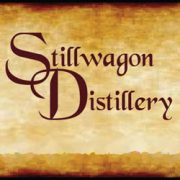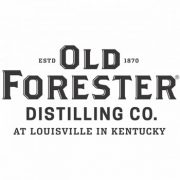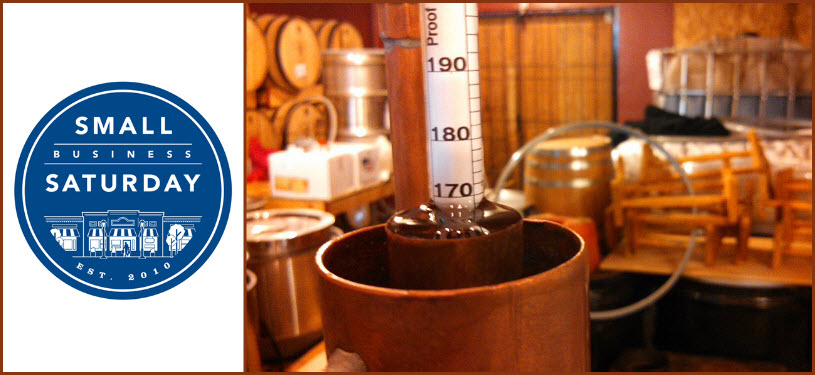
Every year since 2010 the United States has celebrated small businesses with “Small Business Saturday.” It’s the Saturday after Thanksgiving and the day after Black Friday. Although big business often dominates the news cycle, it’s the small businesses that drive the country and allow the dreamers to dream about what’s possible.
From 24 Craft Spirits Distilleries in 2,000 to Nearly 1,600 in 2017
With changes in distillery legislation over the last 10 years, the country has seen a boom in craft spirit distillery startups. The industry has grown from 24 distilleries in a dozen states in 2000 to 1,589 operating distilleries as of August 2017 according to the American Craft Spirits Association. Today, there is at least one distillery in every state across this great nation.
To help celebrate small business we’re sharing as story from Rick Stillwagon, Founder and Distiller of Stillwagon Distillery in Charleston, Oregon.
Craft Spirits is What America is About
Small business is what America is about and what it was built from. Small business is where we will continue to build a future for our children and communities. Small businesses create quality and meaningful jobs and opportunities where people feel pride in their efforts and what they create.
Supporting a craft industry also supports many other small and medium size businesses. Their suppliers, employees, the restaurants and stores you visit and purchase their products from, all benefit from your patronage.
What goes into the making of a Craft Spirit?
Craft distilling requires a great deal of hand labor in the making, bottling, labeling, and marketing of a product.
Production of a craft spirit is very hands on. None of the process is automated in our facility. Mashing of the grains for a whiskey or preparation of a rum wash is all done by hand, stirred by hand, monitored by skilled artisans to the point that it is ready for the next stage.
Fermentation is a fascinating biological process of what yeast does with sugar. In the absence of oxygen, yeast consumes sugar and produce CO2 and ethanol, as well as a variety of other compounds that contribute to the flavor of the end product. Among the many factors we control in fermentation are: sugar source, strain of yeast, nutrients, minerals, water source, temperature, sanitation, and time. By manipulating these factors we affect the type and flavor of our product. This is the first area of opportunity to create a unique spirit.
The operation of a simple still is as much art as it is science. A single batch goes in, is heated carefully to a specific temperature and maintained so as to bring the heads (undesirable compounds) off first without pushing the hearts (whiskey, rum, vodka, etc.) through and wasting product. The hearts are then collected. This is the portion that is kept and eventually finds its way into our bottles. The cut to tails is critical, because there is a great deal of flavor near the end of the distillation run, and knowing where to stop collecting is what greatly decides our flavor profile for our product. Too soon, and it can be rather bland. Too late, and the flavor is negatively affected. These cuts are made by trained senses of smell and taste. There are more clinical methods that can be used such as temperature, but, ultimately it is the aroma and flavor that decide the quality of our product. So we make our decisions based on that criteria rather than readings on a dial.
Barrel aging a significant volume of our spirits, means time spent in a wooden barrel. This is another critical factor in creating a premium quality spirit. There has been a great deal of study, and much written about barrel aging and its merits. Here, I will merely say, there is no substitute for the complex effects of the barrel and the environment in where it is kept. Time, temperature, humidity, ABV of contents, the type of wood, movement, altitude, all have an effect on what is stored inside. Then after the initial aging, whether it is bottled, proofed, the quality of water it is proofed with, secondary aging or finishing, type of barrel that is done in, infusions, additions, blending with other barrels, all again affect the outcome of the finished product. Here again is where a unique flavor profile can be achieved.
Infusion of fruits and spices in a variety of our spirits is how we offer such a variety of products. We accomplish this by using real fruit and spices. We expose as much surface area of the fruit or spice as possible through crushing, chopping, or grinding, depending on the fruit or spice, and putting it directly into the spirit. This allows the alcohol and water to draw out the flavors and oils of the fruit or spice and give us the truest flavors. We then carefully blend these infusions to create a variety of products such as our spiced rums, pineapple and cranberry rum, and our mocha rum.
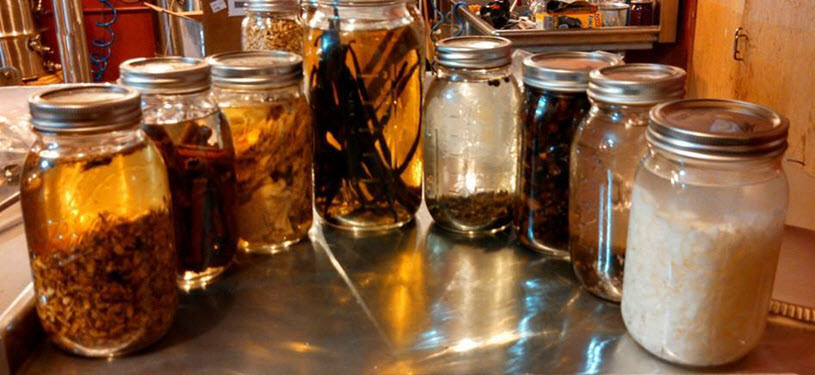
Stay Informed: Sign up here for the Distillery Trail free email newsletter and be the first to get all the latest news, trends, job listings and events in your inbox.
Bottling, labeling and packaging remain after the spirit is completed. All bottles are filled by hand; labels are annotated by hand, applied by hand, sealed by hand, and packaged by hand. Every bottle is touched many times before it makes it to the retailer.
Marketing for the craft distiller is the biggest percentage of time and a great deal of capital spent. Conducting tastings, meeting restaurant and store owners, managers, and mixologists takes a lot of time to educate these critical people in the value of our product. Developing relationships with everyone from distributors to consumers is critical and time consuming. Branding, marketing, and sales will determine the success of a craft distillery regardless of the product itself. A great product will not make it into the hands of the consumer without good marketing efforts.
Sustainable business practices are another effort being made by many small producers. This comes at a cost. It would be much simpler and cost effective to take our waste to the dump or flush it down the drain. But this is creating a heavy toll on the environment. Deteriorating water, air, and soil conditions due to industrial wastes must stop. We can continue to produce quality products without causing harm to the environment. But it requires time, effort, and capital. These requirements are reflected in the cost of the product. So when you spend a little more for a product produced in a sustainable fashion, you are setting a new standard for all businesses.
Education, networking, and the discerning consumer are how we can make this industry and other craft industries successful. Tell your friends, ask questions, make a difference.
What Do You Get For the Extra Cost Of A Craft Spirit?
Unique, Robust Flavor Unlike Any Others
Unique fruits like Feijoa are not found in the big guys products. Our products provide twice the flavor that the average spirit will. The concentration of flavor because of the volume of fruit and spices that goes into each batch allows you to create a drink with all the flavor using half the amount of product.
Premium Quality, Real Ingredients
Small batches that are carefully monitored and attended with exacting attention to the crucial cuts from the heads to the hearts, and cutting out the tails early, gives a much cleaner product from the very beginning. Real fruit and spices give distinct and robust flavor that synthetic flavors simply cannot.
Real Barrel Aging in New, Charred, American Oak Barrels
Using premium, new, charred, American Oak barrels produces a spirit with a rich depth of flavor that takes much longer to attain from previously used barrels.
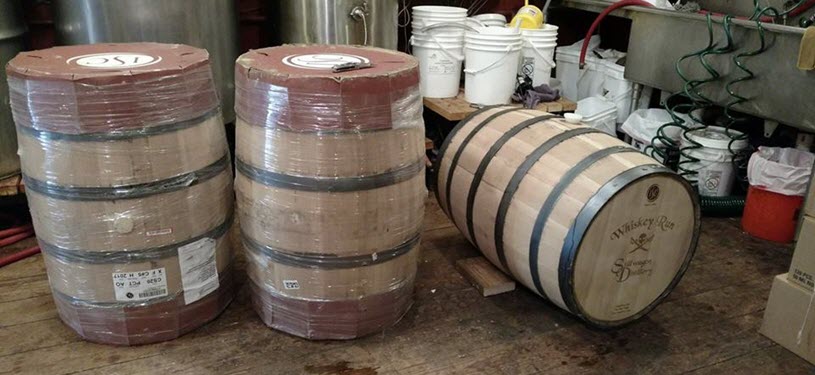
Small batches mean limited volume, which in turn means limited distribution. Access to such unique high quality products gives a person, bartender, or retailer an opportunity that many do not have. This exclusivity is a great experience, a story that can be shared, an opportunity to stand out and create memories. Giving a friend, client, or customer a unique and pleasurable memory is an intangible and valuable asset.
Supporting a “Green” Industry Effort
Sustainable, conscientious business practices must be encouraged and supported if we want to clean up our environment and save it for future generations. Supporting businesses that make a real effort toward developing and using “green” technology and practices will encourage other businesses to do the same.
Cheers,
Rick Stillwagon
Founder and Distiller of Stillwagon Distillery
So, on this Small Business Saturday, get out and support your local craft spirits distillery. You’ll be glad you did!
Please help to support Distillery Trail. Sign up for our Newsletter, like us on Facebook and follow us on Twitter.
Resources
Coppersea Distillery – The U.S. Craft Distilling Market
ACSA – Craft Spirits Data Project


